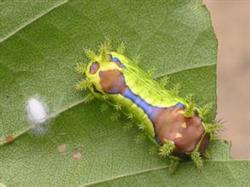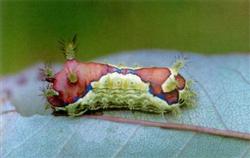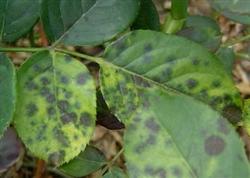Control of Plutella xylostella

Morphological features: the adult is orange-yellow, with filamentous brown diagonal antennae, converging at one point on the wing tip. It is inverted v-shaped, the hind wings are grayish yellow, the feet are brown, the eggs are flat and oval, yellowish. The larva is slightly rectangular, the front end is slightly larger, the body color is bright, the body back moth has a large purple spot, and the head is dark brown. The cocoon is oval. 12mm or so, hard, gray-white, with black stripes, all on the branches or branches of the stem. The yellow diamondback moth produces one generation a year, overwinters with mature larvae on the plant, and pupates from May to June of the following year. The larvae lie still on the back of the leaves during the day and feed at night. Harm to the epidermis and mesophyll tissue under the leaf, serious can eat up the mesophyll, leaving only veins and petioles, serious harm to the rose. Control methods: (1) combined with winter pruning, remove the overwintering cocoons on the branches. (2) using black light to catch and kill adults. (3) spraying 90% trichlorfon 500 × 1000 times during larval occurrence, or spraying 20% pyrethroids 1000 × 2000 times; (4) protecting enemies, such as wasps, long-legged wasps, mantis and so on.
- Prev

Formation characteristics and control of Plutella xylostella
Morphological features: the adult is orange-yellow, with filamentous brown diagonal antennae, converging at one point on the wing tip. It is inverted v-shaped, the hind wings are grayish yellow, the feet are brown, the eggs are flat and oval, yellowish. The larva is slightly rectangular, the front end is slightly larger, the body color is bright, the body back moth has a large purple spot, and the head is dark brown. The cocoon is oval. 12m...
- Next

Disease Control of Chinese Rose
1. Symptoms. Scab is most prevalent in summer and autumn in Beijing. Black-brown spots with a diameter of 3-4 mm appeared on the leaves of diseased rose plants, and there were yellow halos around them, and the leaves fell off. When the disease was serious, only branches and infected buds were left. 2, early prevention (1) Rose seedling stage to prevent to the leaf.
Related
- Fuxing push coffee new agricultural production and marketing class: lack of small-scale processing plants
- Jujube rice field leisure farm deep ploughing Yilan for five years to create a space for organic food and play
- Nongyu Farm-A trial of organic papaya for brave women with advanced technology
- Four points for attention in the prevention and control of diseases and insect pests of edible fungi
- How to add nutrient solution to Edible Fungi
- Is there any good way to control edible fungus mites?
- Open Inoculation Technology of Edible Fungi
- Is there any clever way to use fertilizer for edible fungus in winter?
- What agents are used to kill the pathogens of edible fungi in the mushroom shed?
- Rapid drying of Edible Fungi

